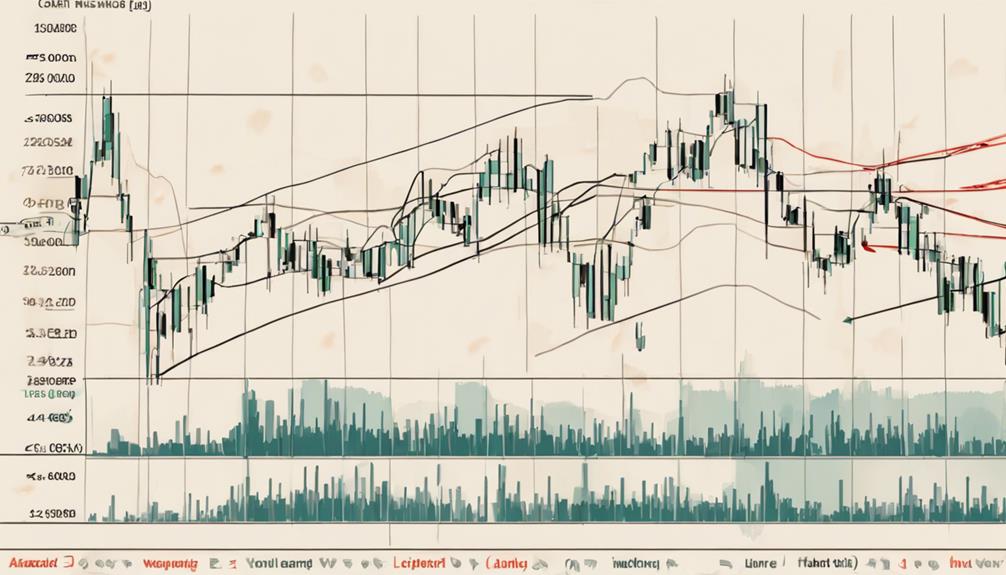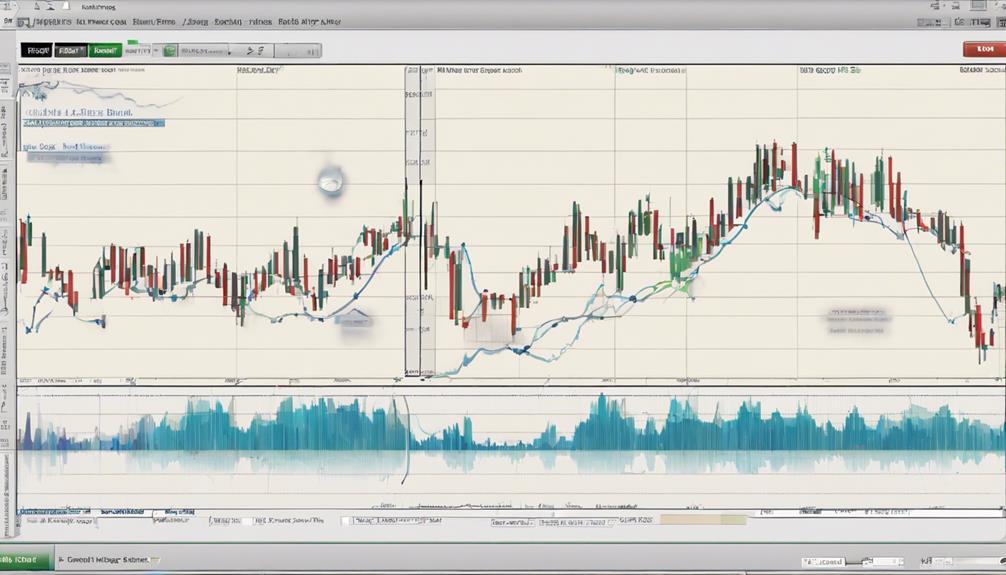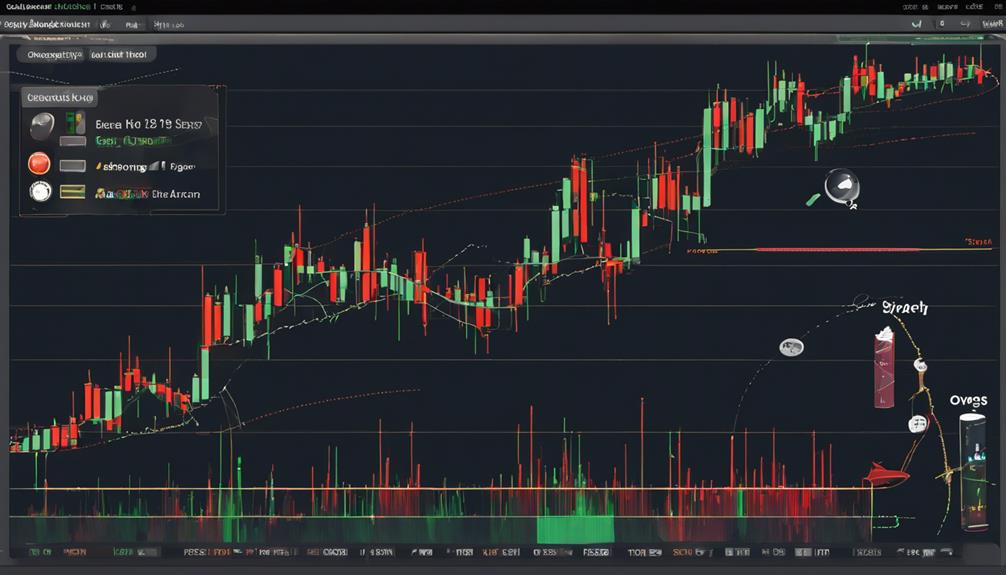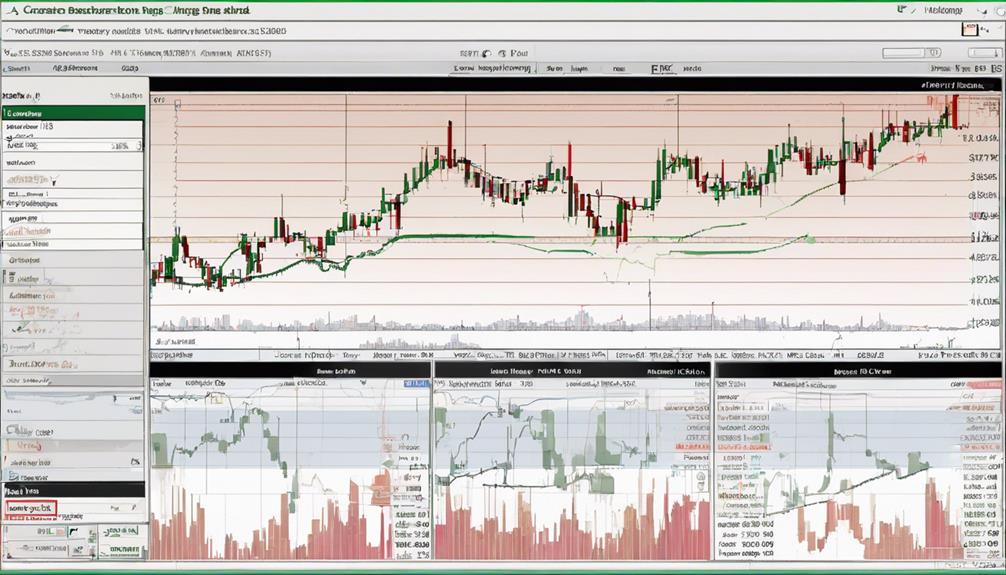You might wonder what sets Bollinger Bands apart from other technical analysis tools, but their simplicity and effectiveness make them a valuable asset for traders.
Have you ever considered how these bands can assist you in identifying potential trading opportunities and understanding market volatility better?
The power of Bollinger Bands lies in their ability to adapt to market conditions and provide a visual representation of price movement.
As you explore further, you'll uncover the nuances of how Bollinger Bands can enhance your trading decisions and improve your overall analysis techniques.
Understanding Bollinger Bands Basics
In technical analysis, grasping the fundamental concepts of Bollinger Bands lays a solid foundation for understanding market dynamics. Bollinger Bands, created by John Bollinger in 1983, consist of a middle band, typically a 20-period moving average, and upper and lower bands determined by 2 standard deviations of price. These bands act as dynamic levels of support and resistance, reflecting market volatility.
The upper band signifies potential overbought conditions, while the lower band indicates possible oversold conditions. Traders use Bollinger Bands to assess price action and volatility, forming part of their trading strategy. Understanding how these bands interact with price movements is crucial in technical analysis to make informed trading decisions based on market conditions.
Interpreting Bollinger Bands Signals

Interpret Bollinger Bands signals by analyzing price movements relative to the bands to identify potential trading opportunities. When prices touch the upper band, it indicates overbought conditions, suggesting a possible sell signal. Conversely, touching the lower band suggests oversold conditions, indicating a potential buy signal.
The width of the bands, which are based on standard deviations from a moving average, can signal changes in volatility. Traders often look for price movements crossing the bands as potential entry or exit points. Additionally, price bouncing off the bands can act as a support level.
Remember that Bollinger Bands signals can be influenced by recent market trends, so it's essential to consider the overall market context when making trading decisions.
Utilizing Bollinger Bands in Trend Analysis

How can Bollinger Bands be effectively utilized in analyzing trends?
Bollinger Bands are a valuable tool in trend analysis, providing insights into price volatility and potential trend reversals. By using the upper and lower bands in relation to the simple moving average, traders can monitor price movements. When the price touches or breaks out of the bands, it may signal buying or selling opportunities based on trend analysis.
The upper band indicates the high price level, while the lower band signifies the low price level. Traders often use Bollinger Bands to assess the strength and direction of trends in trading. Understanding how to interpret these bands can enhance your ability to make informed trading decisions.
Enhancing Analysis With Bollinger Bands

To further leverage the insights gained from utilizing Bollinger Bands in trend analysis, incorporating additional technical indicators can enhance the depth of analysis and improve the accuracy of trading signals. When enhancing your analysis with Bollinger Bands, consider the following:
- Adjusting the Number of Deviations: Altering the number of deviations around the moving average can help fine-tune signals for overbought and oversold conditions.
- Monitoring Price Volatility: Use the width between the upper and lower Bollinger Bands to gauge price volatility, aiding in identifying potential trend reversals.
- Confirming Trends: Combining Bollinger Bands with other indicators can strengthen trend confirmation, providing a more robust foundation for making informed trading decisions.
– Are Bollinger Bands and Relative Strength Index related in technical analysis?
In technical analysis, Bollinger Bands and Relative Strength Index (RSI) are related indicators used to analyze price movement and identify potential trend reversals. Bollinger bands track volatility, while RSI measures momentum. Together, bollinger bands and rsi explained provide valuable insights into market conditions for traders and investors.
How Are Bollinger Bands and Relative Strength Index Used in Technical Analysis?
Bollinger bands and RSI explained are popular technical analysis tools used by traders to identify potential trend reversals and overbought/oversold conditions in the market. Bollinger bands help measure volatility, while RSI indicates the strength of a trend. Both indicators can be used together to make more informed trading decisions.
Combining Bollinger Bands With Indicators

Combining Bollinger Bands with indicators enhances the depth and accuracy of technical analysis in trading strategies. Traders often utilize the Relative Strength Index (RSI) in conjunction with Bollinger Bands to identify potential reversal signals. When RSI extremes align near the Bollinger Bands, it can indicate potential market reversal points.
Conversely, RSI not nearing extremes suggests a lack of immediate reversal signals based on Bollinger Bands. Advanced trading strategies involve analyzing RSI alongside Bollinger Bands to gain more comprehensive insights into market conditions and potential price movements.
Frequently Asked Questions
What Do Bollinger Bands Tell You?
Bollinger Bands tell you about market conditions. Touching upper band signals potential overvaluation; lower band suggests undervaluation. They expand/contract with price volatility, aiding in trend analysis. Traders use them to gauge price action and predict reversals.
How Do You Use Bollinger Bands?
To use Bollinger Bands effectively, monitor price action relative to the bands for potential trend changes. Look for price movements crossing the bands as signals for overbought or oversold conditions. Adjust settings based on market conditions for optimal analysis.
What Is a Good Indicator to Use With Bollinger Bands?
When using Bollinger Bands, consider Relative Strength Index (RSI). RSI helps spot overbought/oversold conditions. Above 70 indicates overbought, below 30 means oversold. Traders watch for RSI divergences with Bollinger Bands to predict trend changes, enhancing buy/sell signals.
What Is the Difference Between VWAP and Bollinger Bands?
In trading, the difference between VWAP and Bollinger Bands lies in focus: VWAP centers on daily price averages, while Bollinger Bands highlight price volatility. Understanding this contrast can enhance your market analysis.
Conclusion
In conclusion, Bollinger Bands are a valuable tool in technical analysis for assessing price action and volatility. By incorporating these bands into your trading strategy, you can enhance your ability to identify market trends and potential buy/sell signals.
Remember, combining Bollinger Bands with other indicators can provide a more comprehensive view of the market. So, don't overlook the power of Bollinger Bands in your trading arsenal to optimize your decision-making process.
